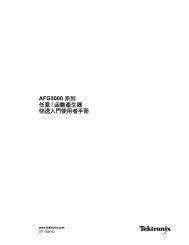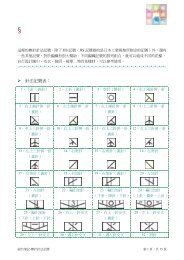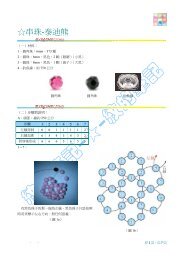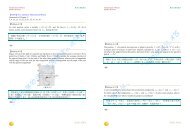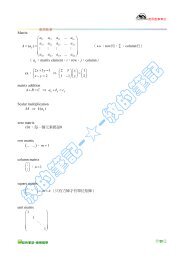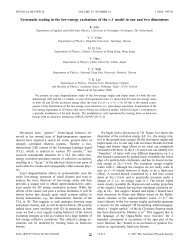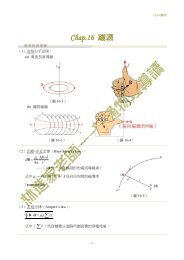Chapter 22 Materials Selection and Design Considerations
Chapter 22 Materials Selection and Design Considerations
Chapter 22 Materials Selection and Design Considerations
Create successful ePaper yourself
Turn your PDF publications into a flip-book with our unique Google optimized e-Paper software.
Hardness (converted to Rockwell C)<br />
20<br />
10<br />
0.0 0.2 0.4 0.6 0.8<br />
Distance from outer surface (in.)<br />
<strong>22</strong>.8 Testing Procedure <strong>and</strong> Results • W105<br />
60 Figure <strong>22</strong>.18 Transverse<br />
50<br />
hardness profile across<br />
the axle cross section.<br />
(Microhardness readings<br />
were converted to Rockwell<br />
C values). [Reproduced with<br />
40<br />
permission from H<strong>and</strong>book<br />
of Case Studies in Failure<br />
Analysis, Vol. 1 (1992), ASM<br />
30<br />
International, <strong>Materials</strong> Park,<br />
OH, 44073-0002.]<br />
It was hypothesized that the central core region was strain-rate sensitive to fracture;<br />
that is, at high strain rates, as with the truck rollover, the fracture mode would<br />
be brittle. By contrast, if failure was due to loads that were applied relatively slowly,<br />
as under normal driving conditions, the mode of failure would be more ductile. In<br />
light of this reasoning <strong>and</strong>, also, in order to glean further evidence as to cause of<br />
failure, it was decided to fabricate <strong>and</strong> test both impact <strong>and</strong> tensile specimens.<br />
Impact Tests<br />
For the impact tests, small [ �2.5 mm (0.1 in.) wide] Charpy V-notch test specimens<br />
were prepared from both outer perimeter <strong>and</strong> interior areas. Since the hardened<br />
outer region was very thin (6.4 mm thick), careful machining of these specimens<br />
was required. Impact tests were conducted at room temperature, <strong>and</strong> it was noted<br />
that the energy absorbed by the surface specimen was significantly lower than for<br />
the core specimen [4 J (3 ft-lbf) versus 11 J (8 ft-lbf)]. Furthermore, the appearances<br />
of the fracture surfaces for the two specimens were dissimilar. Very little, if any, deformation<br />
was observed for the outer perimeter specimen (Figure <strong>22</strong>.19); conversely,<br />
the core specimen deformed significantly (Figure <strong>22</strong>.20).<br />
Figure <strong>22</strong>.19 Fracture surface of the Charpy<br />
impact specimen that was taken from the<br />
outer perimeter region. [Reproduced with<br />
permission from H<strong>and</strong>book of Case Studies<br />
in Failure Analysis, Vol. 1 (1992), ASM<br />
International, <strong>Materials</strong> Park, OH,<br />
44073-0002.]



